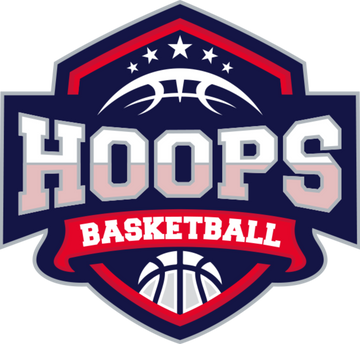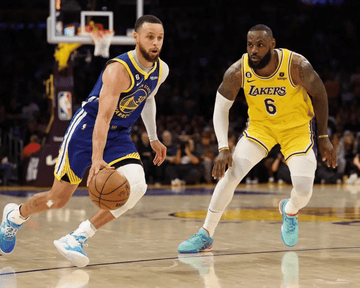Basketball shoes range from the classic to the cool. Whether you sport the original canvas high tops on the court, or the latest leather look, a peak at their beginnings and a little information about choosing the right shoe can enhance our appreciation of them and make the game fun while you shoot for number one.

History of Basketball Shoes
Like many other popular sporting goods apparel, basketball shoes were designed for the sole purpose of outfitting the feet for the game, allowing for high jumps and fancy maneuvers, but wound up being a part of everyday life.
Basketball shoes date back to the 1920s. If our grandparents still remember the first shoes worn on the basketball court, the original Chuck Taylor by Converse would likely come to mind. For more than 40 years the classic canvas tennis with rubber soles were the best-selling basketball shoe in the country, with sales topping 600 million pairs. Canvas was IT, until durable, leather sneakers began to eclipse them in the 1960s. Many brands put out by Nike and Puma began to make their mark on the basketball court, but the Converse made popular by all-star basketball players was still number one.
On the court since 1907, Converse became a name synonymous with basketball. By about 1917, just about every serious player had pair of All Stars on their feet. But with Converse becoming a household name, you didn't have to be a star to be in the show.

Just about everyone owned a pair.
Converse's authentic Chuck Taylor All Stars was the first brand of basketball shoe to dominate the game. Coming to prominence in the 1930s, Converse's classic high-top designed to support the ankles for jumping high set the standard for other reputable manufacturers. Companies copied or competed with the best-selling brand, coming up with new trends and technology, but the original high-tops remained on top.
In the 1970s Nike dunked their name in the basketball industry with their new Blazer, the shoe with the "swoosh", as did Puma with their signature low-top shoes. In the mid-to-late 70s Converse shot back with their new Weapons worn by Magic Johnson and Larry Bird. The 1980s saw some new Nike technology with the introduction of the Air Force 1 and its legendary "air sole" with its classic leather design.
In the mid-1980s and the early 1990s rookie Michael Jordan gave different brands a name in the basketball industry, starting with his "too colorful" signature warm-ups that wound up banned from the court. What followed was Adidas' Ewings, which broke away from the giant manufacturer to stand on its own two feet, simply calling itself "The Ewings".
Jordan began to put his own name on basketball shoes, the Air Jordan series. The next decade launched the Original Pump creating a rival between top-selling manufactures competing for best-selling models. But Air Jordan kept its position at the top while other manufactures experimented with all sorts of trendy bells and whistles designs and innovative technologies, but the bottom line remained under Jordan's feet. What some critics call "the Golden Era" of basketball (1994-98) turned out to be a time of experiment with alternatives from what the world had grown accustomed to. During this time, it was 'everything goes'. New high tech designs using newer materials gave just about every manufacturer a chance to shine.

With the dawn of a new century of basketball, the name of the game was "retro". Shy of any new superstars setting new standards, manufacturers reverted to classic models. Labels experienced a lull, and the Air Jordan series was back. As were other manufactures. The biggest innovation of the new era may well have been the Shox BB4 made popular by star Vince Carter's seven-foot jump during the 2000 Olympics. That launched a new revival among rival manufacturers for newer, better technologies.
Converse stays in the shoe game but is now owned by Nike. Just where basketball shoes will run with the superstars next, remains to be seen.
Choosing the Right Basketball Shoes
Getting the right fit is paramount to choosing the right basketball shoe. As with any court sport, a comfortable foot means a better performance and fewer injuries. Basketball shoes are fundamentally designed to support the ankle. Low as well as high tops should provide comfort as well as support. Look for shoes with skid-free soles, and make sure they are the proper fit. The one finger rule applies to shopping for basketball shoes. If you can slip your finger between your ankle and the back of the shoe you have a good fit. Good- supporting shoes will allow all the maneuvers with none of the pain, even when they're brand new. Take the shoes for a spin around the store, make a fool of yourself. Try before you buy. Do some high and low jumps, dribble an invisible ball. Circle and dive around your imaginary teammates and competitors and see how it feels. If it feels right, then buy it. Don't fall for gimmick designs that promise performance. The proof isn't in the look, but in the feel of the shoe. Good luck, and have fun on the court.





